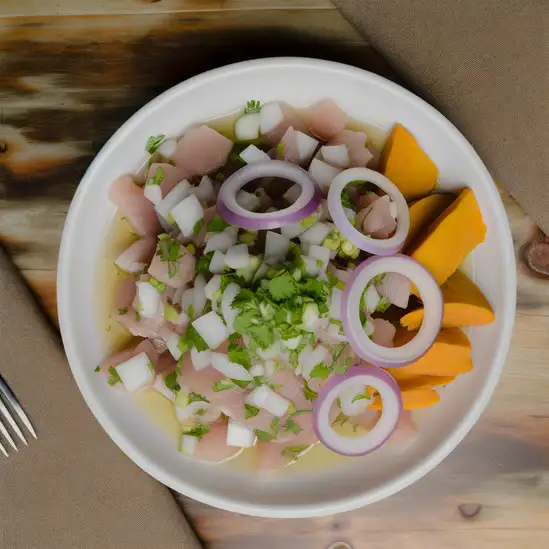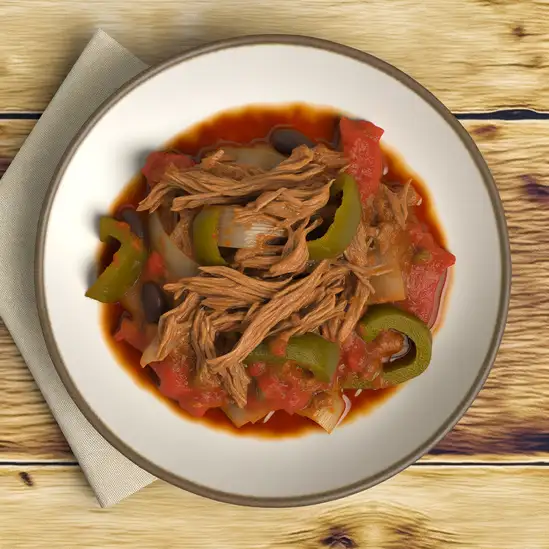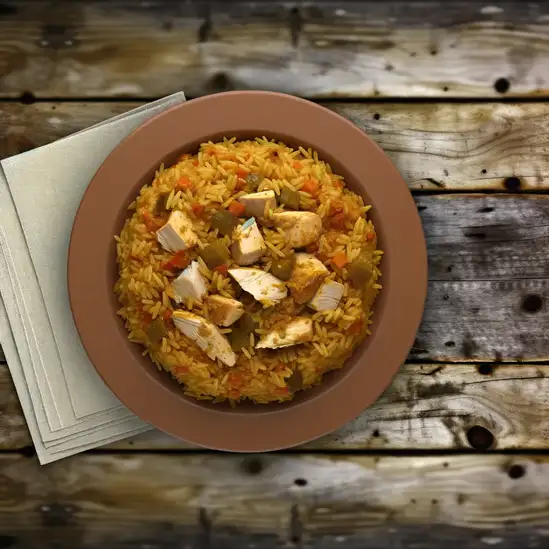



If you ever find yourself craving a place where the ocean breeze carries the laughter of locals and the scent of fresh ceviche mingles with salty air,San Felipe in Panama is where you want to be. This coastal town has a laid-back rhythm that instantly slows you down,inviting you to trade your watch for the gentle pulse of waves lapping against the shore. Walking through its streets,you’ll notice colorful houses with weathered shutters,the chatter of fishermen mending nets,and the occasional strum of a guitar drifting from a nearby porch. San Felipe’s charm lies in its blend of simplicity and warmth. The market buzzes with vendors selling ripe tropical fruits and freshly caught fish,while small cafés serve up rich Panamanian coffee that tastes like a hug in a cup. At sunset,the sky explodes in hues of orange and pink,reflecting off the calm waters and turning the whole town into a painter’s dream. It’s the kind of place where you can sit on the beach,toes in the sand,and feel the worries of the world melt away. What really makes San Felipe special is its people—their genuine smiles and stories shared over plates of grilled seafood. It’s a community that embraces visitors like old friends,eager to share their culture,music,and traditions. Whether you’re exploring nearby mangroves,savoring street food,or simply soaking in the peaceful vibe,San Felipe leaves you with a sense of belonging and a longing to return.
The information on this page is currently being reviewed by Tripkliq and should be used as a guide only
Eng word: Hello
Eng pronunciation: OH-lah
Local language: Hola
Eng word: Goodbye
Eng pronunciation: ah-DYOS
Local language: Adiós
Eng word: Thank you
Eng pronunciation: GRAH-syahs
Local language: Gracias
Eng word: How much
Eng pronunciation: KWAN-toh KWEH-stah
Local language: ¿Cuánto cuesta?
Eng word: Toilet
Eng pronunciation: BAH-nyoh
Local language: Baño
Eng word: Help me
Eng pronunciation: ah-YOO-dah-meh
Local language: Ayúdame
Eng word: Yes
Eng pronunciation: SEE
Local language: Sí
Eng word: No
Eng pronunciation: NO
Local language: No
Eng word: Excuse me
Eng pronunciation: pehr-DOHN
Local language: Perdón
San Felipe, also known as Casco Viejo, was founded in 1673 after the destruction of the original Panama City by pirate Henry Morgan. It was established as a safer, more defensible location.
In 1997, San Felipe was designated a UNESCO World Heritage Site due to its well-preserved colonial architecture and historical significance.
This central square is where Panama declared its independence from Spain in 1821. It remains a vibrant gathering place for locals and tourists alike.
The Metropolitan Cathedral, located in Plaza de la Independencia, is one of the most iconic landmarks in San Felipe. Its construction began in 1688 and was completed in 1796.
Opened in 1908, the National Theatre of Panama is a stunning example of neoclassical architecture and hosts a variety of cultural performances, including opera, ballet, and theater.
Las Bóvedas, or 'The Vaults,' are a series of waterfront chambers originally used for military purposes. Today, they house art galleries, shops, and restaurants.
San José Church is famous for its Golden Altar, which was saved from pirate Henry Morgan's attack by being painted black to disguise its value.
The Presidential Palace, also known as Palacio de las Garzas, has been the official residence of Panama's presidents since 1903. It is named after the herons that inhabit its courtyard.
The Convent of Santo Domingo is known for its Arco Chato, a flat arch that has stood for centuries despite earthquakes and other natural disasters, symbolizing the resilience of the city.
In San Felipe, the most common Power Adaptor is Type A, Type B.



Fresh fish or seafood marinated in citrus juices, mixed with onions, cilantro, and peppers, served as a refreshing appetizer.

A traditional chicken soup made with a variety of vegetables, herbs, and spices, often served with rice.

Shredded beef cooked in a tomato-based sauce, typically served with rice and beans.

A classic dish of rice cooked with chicken, vegetables, and spices, often enjoyed at family gatherings.

Fried green plantains that are smashed and fried again, often served as a side dish or snack with various toppings.

Corn tortillas that are a staple in Panamanian cuisine, often used to wrap various fillings or served alongside meals.

Corn dough wrapped in banana leaves and steamed, often filled with meats or vegetables, making for a hearty snack.
The capital city of Panama,known for the iconic Panama Canal,vibrant nightlife,and the historic Casco Viejo district. A gateway to nearby islands like Taboga Island.
ExploreA stunning archipelago famous for its pristine beaches,crystal-clear waters,and vibrant marine life. A top destination for island hopping and eco-tourism.
ExploreColón has this unmistakable pulse that grabs you the moment you step off the bus or cruise ship. It’s a city where the salty breeze from the Caribbean mingles with the hum of bustling markets and the distant clang of ships docking at the port. Walking through its streets,you’ll catch the vibrant colors of colonial buildings peeling with age,their walls echoing stories of a rich,complex past. The air carries a mix of spices,fresh seafood,and the sweet scent of tropical fruit from street vendors,inviting you to slow down and savor the moment.
What really makes Colón stand out is its raw,authentic energy. It’s not polished or touristy,but that’s exactly where its charm lies. The people here are warm and lively,always ready to share a smile or a story. You’ll hear the rhythms of Afro-Caribbean music spilling out from local bars and community gatherings,a soundtrack that feels alive and deeply rooted in the city’s culture. It’s a place where history and everyday life blend seamlessly—from the grandeur of the Panama Canal locks nearby to the casual chatter of fishermen mending nets by the waterfront.
If you’re a fan of bold flavors,don’t miss trying the local dishes—imagine fresh ceviche bursting with citrus and spice,or a hearty sancocho that feels like a warm hug after a day of exploring. Colón invites you to experience Panama beyond the usual tourist trail,offering a vibrant,sensory-rich adventure that stays with you long after you leave.
David is a city located in the Chiriquí Province of western Panama. It is known for its agricultural activities, particularly coffee production. The city offers a mix of urban amenities and natural attractions, making it a gateway to explore the nearby mountains, national parks, and charming towns. Visitors can enjoy the pleasant climate, vibrant markets, and a variety of outdoor activities such as hiking, birdwatching, and exploring coffee plantations. David is also a commercial and transportation hub, providing convenient access to other popular destinations in the region.
ExploreCartagena de Indias feels like stepping into a vibrant,sun-soaked painting where every corner bursts with color and life. The moment you wander through its cobblestone streets,you’re wrapped in the warm embrace of colonial charm mixed with Caribbean energy. Brightly painted balconies overflow with bougainvillea,and the salty breeze carries the distant rhythm of cumbia and salsa,inviting you to move with the city’s heartbeat. It’s a place where history isn’t just in museums—it’s alive in the laughter spilling from open-air cafes and the clinking of glasses filled with tangy,refreshing aguardiente.
As you stroll along the ancient city walls,the scent of grilled seafood mingles with tropical fruit from street vendors,tempting your taste buds to dive into fresh ceviche or a juicy mango. The sun sets in a blaze of orange and pink over the bay,and the city lights flicker on,casting a golden glow that makes every evening feel magical. Locals greet you with genuine warmth,eager to share stories about Cartagena’s rich past and vibrant present.
What makes Cartagena truly unforgettable is its blend of old-world romance and lively modern spirit. From the bustling plazas where artists display their work to the quiet corners where you can sip a cold cocktail and watch the world go by,the city invites you to slow down and savor every moment. It’s a place that stays with you long after you leave,whispering promises of return.
San José pulses with a lively,unpretentious energy that instantly makes you feel like you’ve stepped into the heart of Costa Rica’s everyday life. It’s not about polished tourist spots here; it’s about the rhythm of the streets,where vendors call out their fresh fruit and the scent of strong coffee mingles with the warm,tropical air. Walking through the city,you’ll catch the vibrant colors of murals splashed across old colonial buildings,and hear the chatter of locals animatedly discussing football or the latest news at a corner café.
The city’s character is a blend of old and new — from the grand National Theater with its ornate architecture to the bustling Mercado Central,where you can taste authentic gallo pinto or sip on a sweet,refreshing agua de sapo. There’s a genuine warmth in the people here; they’re proud of their culture and eager to share stories about their country’s rich history and natural wonders.
What makes San José truly unique is how it feels like a gateway to the rest of Costa Rica’s wild beauty,yet it stands strong on its own as a place full of life and surprises. Whether you’re wandering through leafy parks,catching a local art exhibit,or simply soaking in the city’s vibrant street scenes,San José invites you to slow down,breathe in the moment,and connect with the soul of Costa Rica.
Scammers install skimming devices on ATMs to steal card information and PINs from unsuspecting users.
Tourists are given incorrect change or counterfeit bills when exchanging money or making purchases.
Scammers approach tourists claiming to represent a charity and pressure them into making donations, which are pocketed by the scammer.
Imposters posing as police officers accuse tourists of minor infractions and demand on-the-spot fines to avoid further trouble.
Scammers pose as tour guides offering cheap or exclusive tours, but they provide little to no value or abandon tourists after payment.
Some restaurants in tourist-heavy areas do not display prices and charge tourists significantly more than locals for the same meals.
Unlicensed taxi drivers or those not using meters charge tourists exorbitant fares, especially for short distances.
Scammers create distractions, such as dropping items or asking for help, while accomplices pickpocket tourists.
Tourists are offered free or cheap drinks that are spiked, leading to theft or other crimes while they are incapacitated.
Street vendors inflate prices for souvenirs, food, or drinks when they notice someone is a tourist.
The possession, use, and trafficking of illegal drugs are strictly prohibited in San Felipe, Panama. Penalties for drug-related offenses are severe and can include lengthy prison sentences and substantial fines. Tourists should avoid any involvement with illegal drugs.
In San Felipe, Panama, smoking is generally prohibited in enclosed public spaces, including restaurants, bars, and public transportation. There are designated smoking areas where smoking is allowed. Violations can result in fines.
Vaping is subject to similar regulations as smoking in San Felipe. It is prohibited in enclosed public spaces and public transportation. Designated areas for vaping may be available, but it is advisable to check local signs and regulations.
What are other people saying about San Felipe?
Recent Social posts about San Felipe
There is nothing to show you for now.